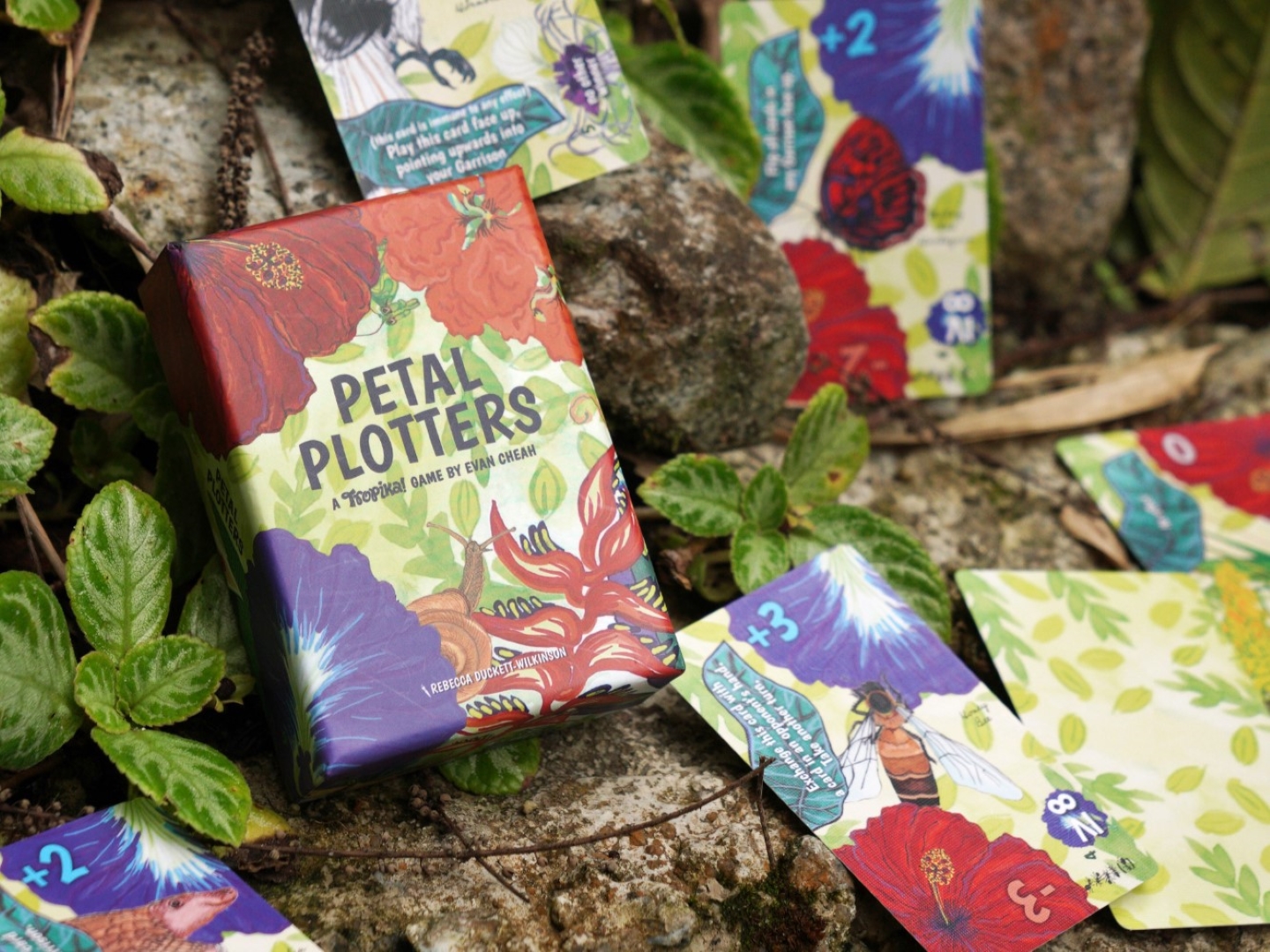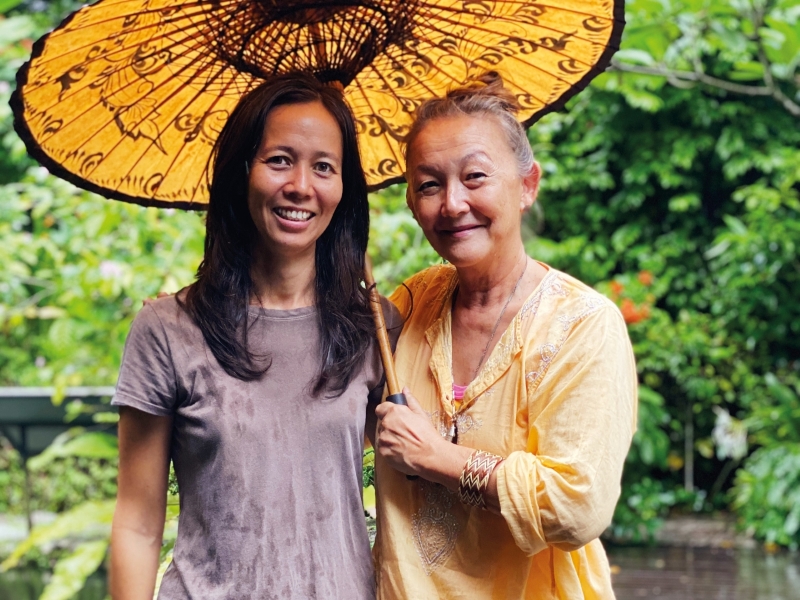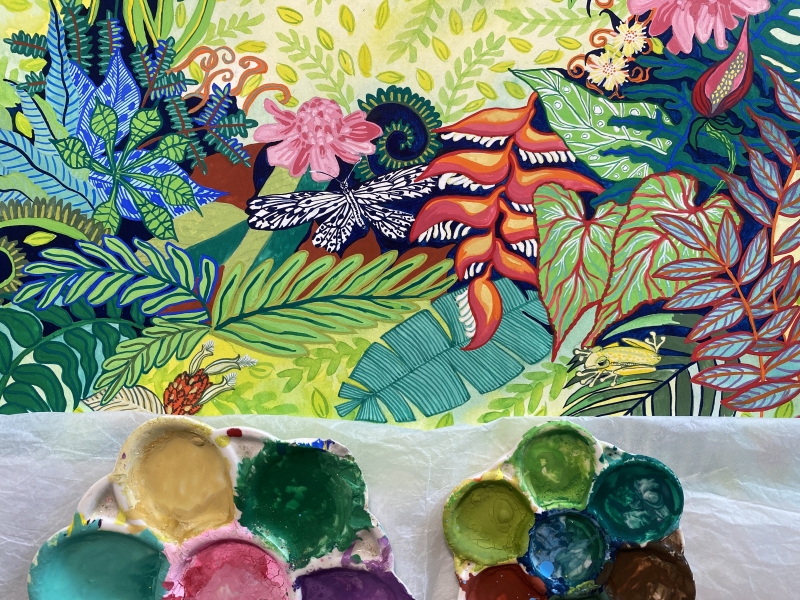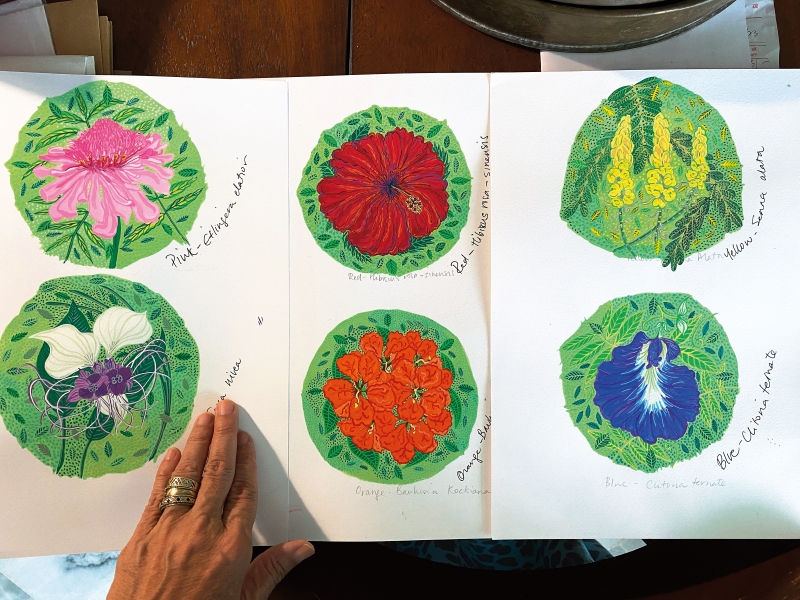
Chua: Board and card games make fabulous gifts, even more so if they speak about the place they were purchased from — in this case, a tropical garden in Malaysia (Photo: Luma)
Petal Plotters is the fruit of friends and business partners who were focused on one purpose, but more so, it is an organic flow of many moving pieces coming together.
Years ago, Katharine Chua of Tropical Spice Garden (TSG) spoke to her friend, media producer Goh Choon Ean, about producing a board game based on the Malaysian rainforest. “The timing wasn’t right then as Goh had not gone into full-time game production herself,” Chua says.
Now, come Sept 7, Petal Plotters — illustrated by Rebecca Duckett-Wilkinson and co-published by TSG and Luma creative studio — will be launched at Chua’s “hidden Eden” in Teluk Bahang, Penang.
Duckett’s history with the five-acre landscaped property where nature meets culture makes the game even more meaningful. She and her husband, David Wilkinson, founded TSG in 2010 and, 11 years later, their long-term business partners Chua and her husband, Kenny, took over as sole owners.
“When the opportunity came up to co-publish a game about a tropical garden, my first thought for an illustrator was Rebecca. I have always thought her child-like, vibrant impressions capture our tropical jungles so well — so thick with layer, texture, playfulness and colour,” says Chua.
petal_plotters.jpg

Goh, who runs Luma, thought along the same lines and the trio dreamt up the name “Tropika!” after ruminating over many possibilities. Petal Plotters is their first product in the series.
“Board and card games make fabulous gifts, even more so if they speak about the place they were purchased from — in this case, a tropical garden in Malaysia. I like that they promote true face-to-face interaction and are designed to bring fun and pleasure,” says Chua.
“I think of board games as the analog version of the gaming world. And it fits right in with the ethos of what the garden stands for. So much of our current programming is about digital detoxing and wellness for both adults and children.”
Duckett can certainly connect with that. “Working on the series of small paintings for Petal Plotters took me full circle back to my childhood,” she says.
Growing up in the plantations around Malaysia was absolutely brilliant, she remembers. “My parents are very special people, but it was my father — he would have been 91 last March — who got us all painting insects, catching butterflies, keeping caterpillars, counting birds, weighing very compliant tock-tock (nightjar) chicks we found on the side of the laterite roads and putting them back, only to find them again in the following days.
img_9622.jpg

“We recorded, wrote about and painted our finds. My brothers were more patient than me and their skill at painting detailed fauna and flora was way better. I was more airy-fairy with my art — I liked painting mermaids.
“But here I am, going back to the basics of why I ended up being an artist; painting little creatures, all of which, as kids, we saw and were very excitedly thrilled at, seeing them in the headlights at night, or flying into the house and ending up in a tree being barked at by our dogs. It took me a while and forced me to be really patient, but I have absolutely loved doing them!”
Her complete set of artworks includes paintings of flowers, animals and insects, a series of patterned backgrounds and a much larger illustration that can be “cut up”, used as a whole or in part.
All the illustrations then went on to Jakarta-based Simon Schmieder, whom Goh had met at the Asian Board Games Festival Singapore and with whom she had “hit it off well”. So, he came on board to help with the graphic design of three Luma games.
“Schmieder did an amazing job of playing with them, cutting them out, overlaying them to create the dynamic designs that make Petal Plotters such a fun game to look at when it’s on the table. I love how he took all the elements from the illustrations and blended them together,” Duckett says.
After Petal Plotters designer Evan Cheah came up with the mechanics of players attacking each other’s garrisons and using fauna as starring creatures, Chua stepped in to advise on which ones would have a negative or positive effect on the plants/flowers or each other.
img_9170.jpg

To select the animals and plants for the game, she sought help from local experts, including Universiti Sains entomologist Dr Nik Ahmad Irwan Izzauddin Nik Him. Research on the behavioural characteristics of each specimen, which Chua was forced to read up on, reinforced the fact that no animal or insect could be regarded as wholly a pest or saviour.
Malaysia’s tropical rainforests, which cover less than 5% of the planet, carry the greatest spectrum of biodiversity. “Each creature, with all its idiosyncrasies, has adapted to play a vital and complex role in this marvellous ecosystem. It is the law of nature that there is death and decay and life and sustenance — all at work at the same time!
“There can be no villains or heroes in reality. Of course, in the game, certain predatory abilities of the animals are zoomed in on and played up more.”
The experience of producing a game has fast-tracked Chua into the fringes of a different world. “I’m learning a new language with game-speak and understanding the complexities of design and all the glorious plethora of what’s on the market.”
Duckett thinks Luma has created a “clever, simple but fast game that gets more and more fun as you play over and over. There is strategy, math, a bit of sabotage, memory and quick thinking”. Its focus on weird and wonderful creatures, many of which are endangered, is a big plus point.
At the launch on Saturday, her original illustrations will be exhibited at TSG’s K(an)opi Coffee, “where you can get the best proper masala chai — not the powdered crap — around. Honest!”
This article first appeared on Aug 26, 2024 in The Edge Malaysia.


